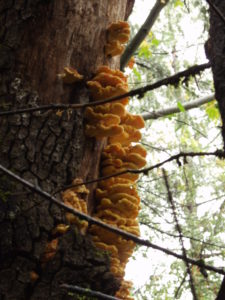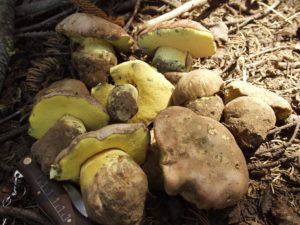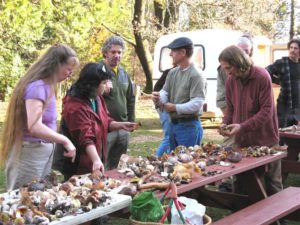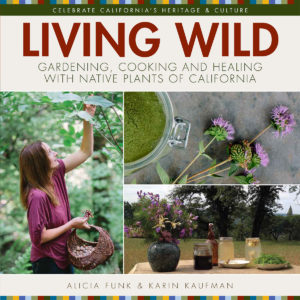The Fungus Will Soon Be Among Us
Moving toward the cooler temperature of September brings a taste of fall. A cooler breeze earlier in the day, some dew in the meadow again, and before even a drop of rain…mushrooms. Most fungi do require lots of moisture, almost always precipitation or fog. But the exceptions are remarkable and massive.
Perhaps in late august above 5,500 feet and in the red fir zone I can find an old tree with some Laetiporus conifericola, also called “chicken of the woods.” This species is the best desired of west coast varieties. Mature Red Rir can also produce giant (2’ across) Ganoderma orogonense – the Oregon Reishi which is a choice medicine for our immune system among other benefits. On the forest floor beneath the mountain conifers little cracks in the earth may open to provide lovely sustenance with edible red capped butter boletes (Boletus regius) or even white chanterelles (Cantherellus subalbidus). All of these fungi are relatively easy to identify for naturalists and botanists who have experience with plants and fungi. The Laws Field Guide to the Sierra Nevada illustrated by my friend John Muir Laws, contains descriptions and drawings of these edible species.
Moving down to around 3,500 ft. and lower, we have a different fungi group emerging. They are certainly in want of water after our usual five months of no rain, but again there are exceptions. Another species of chicken of the woods (Laetiporus gilbertsonii) appears in late to mid-September, predominately on black oak trees. Chicken of the woods is best collected when soft, bright yellow, and watery. Chicken of the woods can be moderately toxic when older (interpreted as woody, dry, and brighter orange) or undercooked. Proper preparation and cooking is accomplished best by parboiling slices for ten minutes and then preparing as usual (grilling, frying, baking). Uncooked or undercooked chicken of the woods will cause nausea and vomiting. Inedible but remarkable Boletus marshii comes out on the dusty September trails in half-pound specimens. Another fascinating fungus erupts through the driest cracked earth or even a paved driveway is the Pisolithus tinctorius, or dead mans’ foot. This grey-green fungus darkens wool and is an important mycorhizial inoculant in the growing of native conifers. And finally, three weeks after some good rains, Boletus aureus, the Queen bolete occurs under madrone, tan oak, manzanita, and black oak trees. A dark-capped, yellow-pored, non-staining bolete that provides abundant food for people, deer, mice, and maggots. Check some of those leafy bumps in the forest at this time.
I will be busy investigating all the rare fungi that I can locate in the southern cascades this fall as well as journeying to Yosemite high country and Sonora. On December 10th, Nevada County residents can enjoy the 14th annual fungus foray, sponsored by the Yuba Watershed Institute. With your participation, new species will be added to our growing list of 465 distinct Nevada County mushroom species, and you will become part of growing the knowledge of our watershed.
Daniel Nicholson







